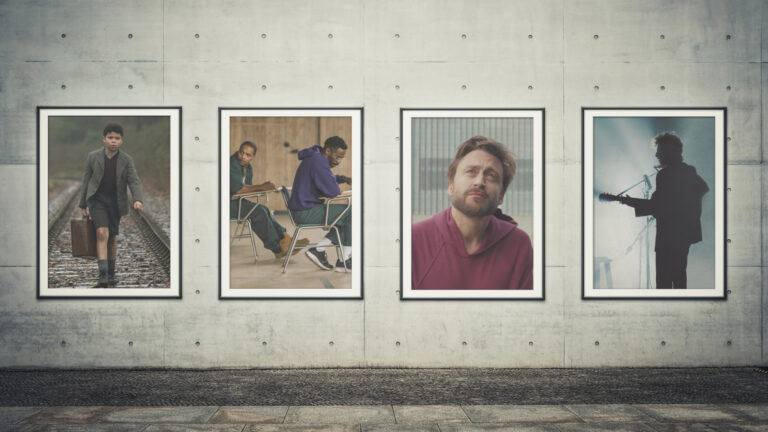This month mark the 50th anniversary of China’s Cultural Revolution. Here are nine things you should know about one of the darkest times in modern human history:
 1. The Cultural Revolution—officially known as the Great Proletarian Cultural Revolution—was a social and political movement within China that attempted to eradicate all traces of traditional cultural elements and replace them with Mao Zedong Thought (or Maoism), a form of Marxist political theory based on the teachings of the Chinese political leader Mao Zedong, the Chinese communist revolutionary and founding father of the People's Republic of China.
1. The Cultural Revolution—officially known as the Great Proletarian Cultural Revolution—was a social and political movement within China that attempted to eradicate all traces of traditional cultural elements and replace them with Mao Zedong Thought (or Maoism), a form of Marxist political theory based on the teachings of the Chinese political leader Mao Zedong, the Chinese communist revolutionary and founding father of the People's Republic of China.
2. Mao Zedong governed as chairman of the Communist Party of China from its establishment in 1949 until his death in 1976. In 1958, Mao launched an economic and social campaign called the Great Leap Forward, which was intended to rapidly transform the agrarian country from into an industrialized socialist nation. The attempts to collectivize farming led to food shortages and the largest famine in history. During the three-year period of 1959 and 1961, between 15 million and 45 million Chinese died. Because of this policy failure, Mao’s influence in the Communist Party began to wane. He launched the Cultural Revolution in May 1966, in part to reassert his power and prestige within the party and the country.
3. The beginning of the Cultural Revolution is traced to May 16, 1966, when Mao issued a document that included “indictments” against his political foes. In what has become known as the “May 16 notification,” Mao claimed, “Those representatives of the bourgeoisie who have sneaked into the party, the government, the army, and various cultural circles are a bunch of counter-revolutionary revisionists.” Although Mao unveiled his intention in May, it was not until August that the Communist Party issued the “Decision Concerning the Great Proletarian Cultural Revolution,” which outlined the chairman’s goals. The two primary institutions that Mao wanted to eliminate were education and religion, the main threats to Mao Zedong Thought.
4. In the summer of 1966, groups of students—from middle school to college age—began to form violent paramilitary units. Mao, who believed violence was a sign of a true revolutionary, sponsored the radical students. He ordered the nation’s schools to be shut down and encouraged these students—known as Red Guards—to dedicate themselves to revolutionary activity. Much of this activity included violence against the elderly, teachers, and other traditional authority figures.
5. Mao and his allies held several rallies that were attended by millions of children and teens who identified as Red Guards. At an August rally for the Red Guards, the students were told to attack the “Four Olds” of Chinese society (old customs, old culture, old habits, and old ideas.) Over the next two months hundreds of thousands of homes were looted by Red Guard members, stealing money and valuables and destroying books, magazines, and works of art. The students also destroyed religious institutions and cemeteries, libraries, and cultural and historical artifacts.
6. Along with destroying property, Red Guards members also humiliated, tortured, and murdered innocent people. In August and September of 1966, historians Roderick MacFarquhar and Michael Schoenhals note, the Red Guards murdered more than 1,700 people in Beijing. In Shanghai in September there were 704 suicides and 534 other deaths related to the Cultural Revolution. During this wave of violence Mao issued a directive ordering the police not to interfere with the “student movement.”
7. Chinese historian Song Yongyi says the widespread phenomenon of mass killings in the Cultural Revolution consisted of five types: “1. mass terror or mass dictatorship encouraged by the government—victims were humiliated and then killed by mobs or forced to commit suicide on streets or other public places; 2. direct killing of unarmed civilians by armed forces; 3. pogroms against traditional “class enemies” by government-led perpetrators such as local security officers and militias; 4. killings as part of political witch-hunts (a huge number of suspects of alleged conspiratorial groups were tortured to death during investigations); and 5. summary execution of captives, that is, disarmed prisoners from factional armed conflicts. The most frequent forms of massacres were the first four types, which were all state-sponsored killings. The degree of brutality in the mass killings of the Cultural Revolution was very high. Usually, the victims perished only after first being humiliated, struggled, and then imprisoned for a long period of time.” Because the death toll is considered a Chinese “state secret,” no one knows for sure how many people died during the Cultural Revolution. Estimates by various scholars range from 500,000 to 8 million.
8. By December 1968, Mao had reestablished his cult of personality and restored his influence. Having achieved his objective, he grew tired of the chaos and violence he had unleashed. He implemented the “Down to the Countryside Movement,” an expansion of a program in which young “intellectuals” from the cities were sent to the rural areas of the country to live with a work with the peasant class. (Mao’s definition of intellectual was loose and included children who merely had a middle school education.) From 1962 to 1979, about 17 million “sent-down youths” were displaced, leaving the country with an entire generation of undereducated people.
9. The Cultural Revolution ended in 1976 with Mao’s death and the arrest of the Gang of Four. This small political faction, which included Mao’s wife, had played a prominent role in the formation and expansion of the Cultural Revolution. Mao’s successor, Hua Guofeng, had them arrested and jailed for their involvement and crimes. Although the chaos ended in 1976, the devastating revolution continued to affect the Chinese people for the next 50 years.
Other articles in this series:
Jehovah’s Witnesses • Harriet Tubman • Autism • Seventh-day Adventism • Justice Antonin Scalia (1936–2016) • Female Genital Mutilation • Orphans • Pastors • Global Persecution of Christians (2015 Edition) • Global Hunger • National Hispanic Heritage Month • Pope Francis • Refugees in America • Margaret Sanger • Confederate Flag Controversy • Elisabeth Elliot • Animal Fighting • Mental Health • Prayer in the Bible • Same-sex Marriage • Genocide • Church Architecture • Auschwitz and Nazi Extermination Camps • Boko Haram • Adoption • Military Chaplains • Atheism • Intimate Partner Violence • Rabbinic Judaism • Hamas • Male Body Image Issues • Mormonism • Islam • Independence Day and the Declaration of Independence • Anglicanism • Transgenderism • Southern Baptist Convention • Surrogacy • John Calvin • The Rwandan Genocide • The Chronicles of Narnia • The Story of Noah • Fred Phelps and Westboro Baptist Church • Pimps and Sex Traffickers • Marriage in America • Black History Month • The Holocaust • Roe v. Wade • Poverty in America • Christmas • The Hobbit • Council of Trent • C.S. Lewis • Halloween and Reformation Day • Casinos and Gambling • Prison Rape • 6th Street Baptist Church Bombing • 9/11 Attack Aftermath • Chemical Weapons • March on Washington • Duck Dynasty • Child Brides • Human Trafficking • Scopes Monkey Trial • Social Media • Supreme Court's Same-Sex Marriage Cases • The Bible • Human Cloning • Pornography and the Brain • Planned Parenthood • Boston Marathon Bombing • Female Body Image Issues • Islamic State
“The Most Practical and Engaging Book on Christian Living Apart from the Bible”
 “If you’re going to read just one book on Christian living and how the gospel can be applied in your life, let this be your book.”—Elisa dos Santos, Amazon reviewer.
“If you’re going to read just one book on Christian living and how the gospel can be applied in your life, let this be your book.”—Elisa dos Santos, Amazon reviewer.
In this book, seasoned church planter Jeff Vanderstelt argues that you need to become “gospel fluent”—to think about your life through the truth of the gospel and rehearse it to yourself and others.
We’re delighted to offer the Gospel Fluency: Speaking the Truths of Jesus into the Everyday Stuff of Life ebook (Crossway) to you for FREE today. Click this link to get instant access to a resource that will help you apply the gospel more confidently to every area of your life.

































